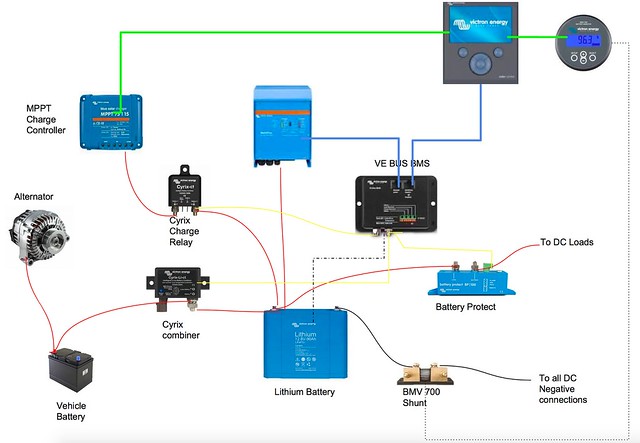This looks like it is going to be one really nice power system. One question - what exactly is the Cyrix charge relay for? I just set my MPPT charger up for LiFEPO4 chemistry and forgot about it. One comment - you should confirm that there is some sort of low temperature cut off in the system. One of the drawbacks to LiFEPO4 chemistry is that you really shouldn't charge the batteries below 0C. Maybe I just answered my question about the Cyrix charge relay.
In my conversations with Peter, he mentions a temperature sensor that's not shown in the diagram he sent me, so I think this is covered. In any event, it's SUPER unlikely my batteries will see 0C anyway. Good mention for others who might be following along, though!
As for the Cyrix charge relay, my understanding is LiPo's shouldn't be charged any longer once completely full. The Victron batteries literally pass a message that they are now full and that relay gets the message and shuts off completely. If you're not using Victron batteries, I'm guessing the MPPT has to do a bit more of an educated guess about what "full" is. It's probably "pretty good" at that educated guess, but this is probably a bit more ideal.
--Donnie

